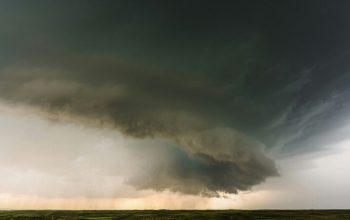AMES, Iowa – One sure sign that fall is here is when the garden centers and greenhouses fill up with beautiful fall mums. Mums offer gardeners a wide range of colors and flower forms and only require moderate levels of maintenance. Horticulturists with Iowa State University Extension and Outreach offer tips on growing and caring so you can get the most enjoyment out of fall mums.
What is the difference between garden mums purchased and planted in the spring and fall mums found in the garden centers and florist shops in early fall?
Fall mums just beginning to open at a garden center.There is a difference between garden mums and florist mums. Garden mums are more cold hardy and have a shorter dark period (photoperiod) requirement, resulting in most cultivars blooming in early fall in Iowa.
Florist mums are sold throughout the year at floral shops, supermarkets and other retailers. Most florist mums will not survive the winter when planted outdoors in Iowa. Those florist mums that manage to survive the winter typically don’t bloom outdoors because they bloom too late in fall. Oftentimes freezing temperatures destroy the flower buds before they fully develop and open.
It’s usually best to enjoy florist mums until the blooms fade and then toss the plant into the compost pile. If you would like to grow mums in your garden that return year after year, purchase hardy garden mums at a local garden center in spring.
Will fall planted mums survive the winter?
Unfortunately, mums, even garden mums labeled as hardy, frequently don’t survive the winter when planted in the fall. Flowering mums purchased in late summer or early fall should be regarded as temporary additions to the landscape much like many other annuals such as pansies, snapdragons or ornamental kale. Spring is the best time to plant mums in Iowa. Spring planted mums have the entire growing season to get established and usually survive the winter much better than those planted in fall.
How can I increase the likelihood of my garden mums surviving the winter?
Of the hundreds of mum cultivars available to gardeners, only a small percentage are winter hardy in Iowa. Even those that are hardy often require extra protection over winter to survive. Several things can be done to increase the likelihood of garden mums surviving the winter in Iowa.
When purchasing plants, be sure to select hardy garden mums rather than florist mums. For example, many of the University of Minnesota introductions, such as the Mammoth series, perform well in Iowa. Typically, mums available in spring that are not in bloom at the time of purchase are winter hardy, and those mums available for purchase in full bloom in summer and fall are not hardy garden mum cultivars.
Select early flowering cultivars that will produce blooms before the end of the growing season. Stop fertilizing plants in July to discourage late season growth, which can be damaged by early frosts and over the winter. Plant chrysanthemums in spring to give them an entire growing season to become fully established before winter sets in. Finally, cover plants with a protective winter mulch in late fall after the stems turn brown. This extra “blanket” helps mums overwinter successfully, especially the first couple of years after planting.
How should I prepare garden mums for winter?
Chrysanthemums are shallow-rooted plants. Repeated freezing and thawing of the soil during the winter months can heave plants out of the ground and cause severe damage or even death. Gardeners can increase the odds of their mums surviving the winter by applying a mulch in fall. Mulching helps eliminate the alternate freezing-thawing cycles that can heave plants out of the soil. Apply the mulch in late fall, typically late November in central Iowa. Do not cut back the plants prior to mulching. Simply cover the plants with several inches of mulch. Suitable mulching materials include clean (weed-free) straw, pine needles and evergreen branches. Leaves are not a good mulch as they tend to mat down and don’t provide adequate protection. The mulch should remain in place until early spring.







